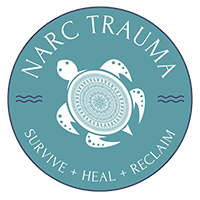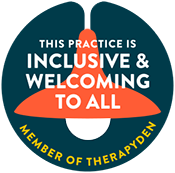Reality Check for Survivors of Narcissistic Abuse: Questions to Break the Spell

By Brenda Stephens, Licensed Professional Clinical Counselor
Trauma bonding can feel like a magic trick you did not sign up for. Your brain grabs onto crumbs and calls it a meal. Your body mistakes adrenaline for love. Hope feels like proof. None of this means you are weak. It means your nervous system did its job under stress. This post is your reset button. Use it to reality test the relationship, not to shame yourself. The goal is clarity, choice, and your future.
How to use this
Pick one question a day. Answer it in writing. Keep your answers grounded in facts you can point to, not feelings the other person argued you should have. If you notice grief or anger rising, good. That means your system is thawing. Take breaks. Drink water. Keep going.
Knowing what you know now, about who they are and how they treated you, if you met them for the first time today, would you still choose them?
Answer without explaining away the past. Imagine you are choosing with fresh eyes and healthy boundaries. If your body says no while your brain drafts excuses, trust your body.
How did you abandon yourself or silence your truth just to keep the peace or hold the relationship together?
List specific moments. “I stopped seeing my sister.” “I hid receipts.” “I laughed it off when they mocked me.” These are not small things. They are the breadcrumb trail back to you.
In what real, measurable ways did they grow or change to make the relationship healthier? Did any of those changes last, or were they just promises that faded once you relaxed?
Write down actions with dates and duration. “They apologized and went to counseling for 3 sessions, then stopped.” Consistency is change; confetti promises are not.
What did you believe this relationship gave you that you could not give yourself or find elsewhere?
Name the need, not the person. Love, validation, financial security, a sense of belonging. Needs are human. Only some sources are healthy. Once you name the need, you can meet it in safer ways.
Was there still room for genuine growth inside that relationship, or were you looping through the same pain dressed up as lessons?
Look for cycle patterns. Idealize, devalue, discard, hoover. If the “lesson” never graduates into lasting change, it is not a lesson. It is a loop.
If the version of you who saw the truth back then could speak to the part still longing for them now, what would it say?
Let your clear self write a short letter. Two paragraphs, kind and firm. Keep it where you can reach it at 2 a.m. when nostalgia pretends to be love.
If someone you loved, a best friend, or your child, were in the exact same relationship, what would you tell them to do?
Take your own advice. If you would pull your friend out of the fire, do not keep standing in it because you know the flames.
What emotions are you avoiding by holding onto them: loneliness, regret, fear of starting over, or the grief of admitting what was real?
Name the emotion and give it a plan. Lonely means scheduled connection. Regret means practicing self-forgiveness. Fear of starting over means building a simple next step. Grief means allowing tears and creating ritual.
Who are you actually missing, the person they truly were, or the version of them you hoped might someday exist?
Hope is beautiful. It is not a treatment plan. If what you miss is the fantasy, it is time to mourn the story so you can meet real life.
When you imagine your future, do they stand beside you because it feels right, or simply because it feels familiar?
Familiarity is not the same as safety. Your nervous system may chase what it recognizes. Healthy may feel boring at first, and boring is often where peace lives.
What your answers reveal
If most answers lean on “maybes,” “somedays,” and “if they would only,” you are negotiating with a dream. If your list of measurable change is short and your list of self-abandonments is long, your body is asking for an exit strategy. If you would tell your best friend to run but you keep staying, that is cognitive dissonance, not consent.
Here is the blunt truth with a soft landing: you did not fail. You adapted. Your adaptations kept you going. Now you get to update them.
How to move from clarity to action
-
Set one boundary you can enforce this week.
Examples: no more late-night calls, block on social media, no in-person contact, route all logistics through email. -
Build a tiny safety net.
One therapist or support group. One trusted friend. One place to go when you feel wobbly. Put names and numbers in your phone under “Future Me Safety.” -
Replace the hook.
Identify the top trigger that pulls you back in. Create a competing ritual. When the urge hits, you text your safety person, take a brisk walk, or journal for five minutes. The urge is a wave. Waves pass. -
Relearn your baseline.
Your body needs proof that calm exists. Try 60 seconds of long exhale breathing, a cold splash on the face, or humming to stimulate the vagus nerve. Do it daily so peace stops feeling foreign. Visit the Trauma Toolbox at www.narctrauma.com for guided exercises. -
Prepare a short exit plan if needed.
If you are leaving, list the steps in order and keep them small. Documents, finances, housing, legal advice, support. Just take steady steps.
A quick word on guilt and grief
Guilt will tell you that leaving is cruel. Grief will tell you that staying is easier. Both are loud at first. You are allowed to feel sad about losing the fantasy and still choose the truth. You are allowed to love someone and decide they are not safe for you. These two things can exist in the same sentence.
What healing can look like next
Healing is not dramatic. It looks like full meals, real sleep, and steady routines. It looks like laughing without bracing for a blow. It looks like friends who do not need you to be smaller. It looks like a future you choose, not a past you keep re-enacting.
Keep these questions. Revisit them in 30 days. Compare your answers. Progress shows up on paper before it shows up in your bones.
Throughout the relationship, you were just asked to contort. Start unbending now, one honest answer at a time.
Ready for steady nervous system support and step-by-step tools? Explore the Trauma Toolbox at NarcTrauma.com and listen to our podcast “Two Queens and a Joker: My Narcissist’s Ex and Me” for real stories and practical guidance.
Author
Brenda Stephens, LPCC, specializes in narcissistic abuse recovery and teaches trauma-informed care for clinicians. Learn more at NarcTrauma.com.
Ready to Take the Next Step in Your Healing?
If this article resonated with you, you don’t have to navigate the aftermath of narcissistic abuse alone. Here are ways to connect, learn, and heal with us:
-
Listen to the podcast: Dive deeper into these conversations on Two Queens and a Joker: My Narcissist’s Ex and Me. Every episode combines lived experience with professional insight to help you feel less alone.
-
Join a group: Healing happens in safe, validating spaces. Explore our specialized support groups for survivors of narcissistic abuse (SoNA) https://narctrauma.com/s-o-n-a-support-group/, and ask us about other supports, including programs for those going through divorce and recovery after narcissistic abuse.
-
Work with a specialist: At NarcTrauma.com, I work exclusively with survivors of narcissistic abuse and have personally trained our therapists in working with survivors of narcissistic abuse. Whether through individual therapy, group programs, or guided resources, you’ll find tools to rebuild your sense of safety, self-worth, and identity.
You deserve to heal, reclaim your power, and build a future where connection is safe and real.
We specialize in helping survivors untangle the patterns of narcissistic abuse and recover their sense of self. Learn more at www.narctrauma.com.
Follow for support and resources:
Facebook: Narcissistic Abuse Recovery Center
TikTok: @narctraumarecovery
Instagram (Podcast): @2queensandajoker
Instagram (Recovery): @narcrecoverycenter







